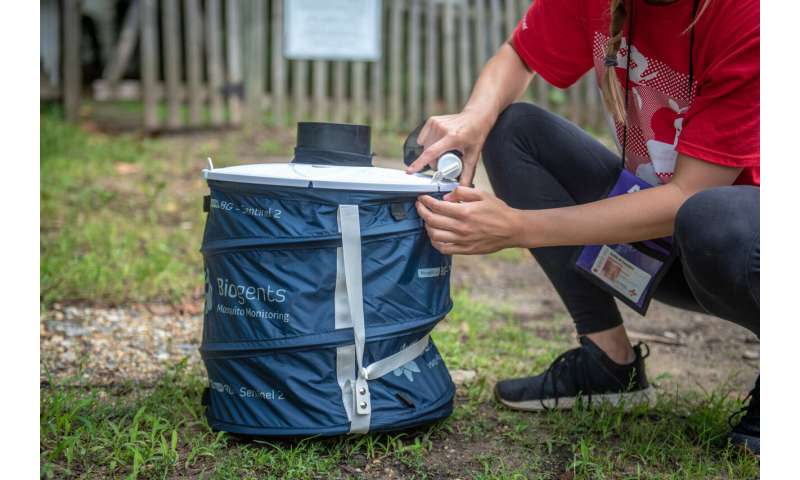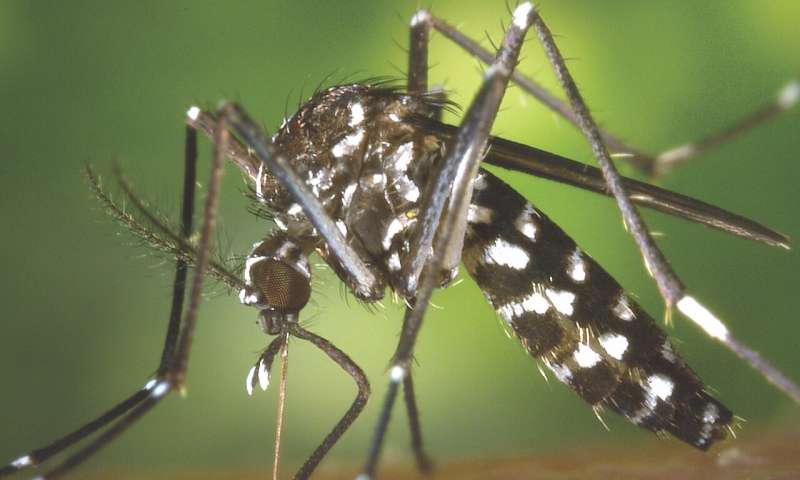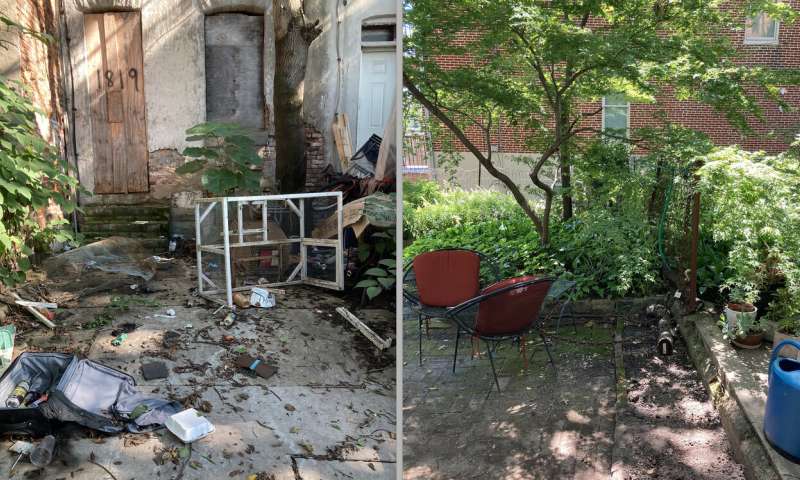
In Baltimore, Maryland, people living in low-income urban neighborhoods are more at risk of contracting West Nile virus, a mosquito-borne disease, than people living in more affluent neighborhoods. So reports a new study published in the Journal of Medical Entomology.
Lead author Sarah Rothman, a graduate student in the Department of Environmental Science and Technology at the University of Maryland College Park, says, “Our study is the first in Baltimore to document how West Nile virus infection in mosquitoes varies relative to neighborhood socioeconomics. Knowing where mosquito abundances are high, and what diseases they carry, can help focus surveillance and management programs where they’re needed most.”
Mosquito-borne disease is a growing threat in cities throughout the US. Vacant lots and abandoned buildings can create environmental conditions that bolster mosquitoes and the diseases they carry. Overgrown vegetation, standing water for breeding, and access to blood-meals from rodents, cats, and birds can put nearby residents at risk of contracting mosquito-borne diseases like Zika, chikungunya, and West Nile viruses.
This study builds on previous research that found mosquito-borne disease is an environmental justice issue in Baltimore. Co-author Shannon LaDeau, a disease ecologist at Cary Institute of Ecosystem Studies, says, “Past work revealed that lower income neighborhoods tend to have more mosquito habitat than more affluent neighborhoods, leading to higher risk for people who are already vulnerable due to limited access to healthcare. We also found that larger mosquitoes, which may have greater infection potential, thrive in less affluent neighborhoods.”

The latest study took place over three years and focused on five neighborhoods in Baltimore representing a socioeconomic range. Focal neighborhoods included two neighborhoods with incomes below the median, two at the median, and one above the median annual household income. All five neighborhoods consist of similar blocks of rowhomes and are located within 2km of each other, minimizing environmental variation.
In 2015 and 2016, the team sampled adult mosquitoes in all five neighborhoods; all but the one most affluent neighborhood were also sampled in 2017. Every three weeks from June through September, the team set traps (4-6 traps per neighborhood; 26 traps total) and left them to lure mosquitoes for 72 hours. Traps were baited with carbon dioxide and a mammal-derived attractant, and were placed in shaded, protected sites.
Target mosquito species included the invasive tiger mosquito (Aedes albopictus) and native Culex species (principally the northern house mosquito, Culex pipiens) which are known to thrive in cities and transmit diseases to people. Back in the lab, mosquitoes were tested for the pathogens causing West Nile virus, chikungunya virus, and Zika virus.
The team detected West Nile virus in Ae. albopictus and Culex collected in all neighborhoods sampled in 2015 and 2017. West Nile virus was not detected in any neighborhood in 2016. A possible explanation could be extreme heat recorded that summer, which can kill mosquitoes before they can spread disease. Chikungunya and Zika were not detected at any point. In 2015, mosquito infection rate was highest in the two least affluent neighborhoods. In 2017, mosquito infection rates in medium-income neighborhoods increased substantially, exceeding infection in the least affluent neighborhoods by a slim margin.

LaDeau says, “This study highlights the discrepancy in health risks facing Baltimore residents. Less affluent communities are more at risk of being bitten by a mosquito infected with West Nile virus, and negative health outcomes are compounded by deficient medical resources in these neighborhoods. Monitoring neighborhoods for mosquitoes is a step we can take to identify where mosquitoes are breeding and where residents are at risk. This information can guide measures to mitigate those conditions and protect residents.”
Senior author Paul Leisnham, an Associate Professor at the University of Maryland College Park, says, “Protecting residents starts with thorough monitoring. Since mosquito numbers and infection rates vary block to block, coarse-scale sampling makes it easy to miss pockets of infection. Effective management requires consistent, fine-scale surveillance, even in sites where access is tricky.”
Source: Read Full Article